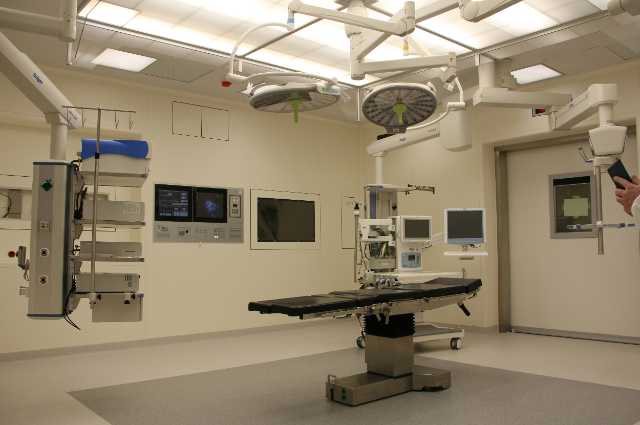
Photo by Marcel Scholte on Unsplash
The Art and Science of Surgery
Imagine a future where the surgeon's scalpel is not the sole conductor of a delicate operation. Instead, a robotic arm, guided by the steady hand of a human surgeon and the precise calculations of artificial intelligence (AI), performs intricate maneuvers with unmatched precision. This isn't science fiction; it's the reality unfolding in the sterile corridors of modern operating rooms, where AI and robotics are transforming surgery, ushering in an era of minimally invasive procedures, faster recovery times, and potentially, improved patient outcomes.
The Surgeon's Symphony: Where Skill Meets Precision
Surgery has always been a precarious dance between artistry and science. A surgeon's skill, honed through years of training and experience, is paramount. Yet, the human body is a complex ecosystem, and even the most skilled hands can falter under pressure, fatigue, or the limitations of human dexterity.
Enter AI: The Unshakeable Assistant
This is where AI steps in, not to replace the surgeon, but to become an unwavering assistant, amplifying human capabilities and minimizing the margin for error. AI algorithms can analyze vast amounts of medical data, including a patient's medical history, imaging scans, and real-time surgical data. This allows surgeons to:
- Plan Procedures with Unprecedented Precision: AI can create 3D models of the surgical site, allowing for meticulous preoperative planning and rehearsal of procedures.
- Navigate with Unwavering Accuracy: AI-powered robotic arms can translate a surgeon's hand movements with enhanced precision, allowing for delicate maneuvers in tight spaces and minimizing tissue damage.
- Gain Real-Time Insights: AI can analyze data from surgical tools and monitor vital signs, providing surgeons with real-time feedback and potential risk warnings during the procedure.
Robotic Arms Take Center Stage: A New Dimension in Surgical Precision
Robotic surgery utilizes sophisticated robotic arms controlled by the surgeon from a console. These arms offer several advantages over traditional laparoscopic surgery, including:
- Enhanced Dexterity: Robotic arms have a wider range of motion and finer control than human hands, allowing for intricate maneuvers in hard-to-reach areas.
- Improved Visualization: Surgeons operate from a console with a magnified, high-resolution view of the surgical site, providing superior visualization compared to traditional laparoscopic techniques.
- Reduced Tremor: Robotic arms eliminate the natural tremor present in human hands, leading to increased precision and reduced tissue damage.
Precision Medicine: Tailoring Treatments to the Individual
AI doesn't just guide surgical tools; it also personalizes the surgical approach. Precision medicine, fueled by AI analysis of a patient's unique genetic makeup and medical history, allows surgeons to:
- Target the Root Cause: AI can identify the specific genetic or molecular drivers of a disease, allowing for a more targeted surgical approach to maximize effectiveness.
- Minimize Side Effects: By understanding a patient's unique response to medications, AI can help surgeons design treatment plans with minimal side effects and faster recovery times.
- Predict Outcomes: AI analysis of patient data can help surgeons predict potential complications and tailor procedures accordingly, leading to improved patient outcomes.
The Symphony of Human and Machine: A Collaborative Dance
Despite the remarkable advancements, it's crucial to remember that AI and robotics are not replacements for human surgeons. The surgeon remains the maestro, wielding the technology as an extension of their skill and expertise. The real power lies in the collaborative dance between human intuition and machine precision.
Navigating the Ethical Landscape: Challenges and Considerations
As with any groundbreaking technology, AI and robotics in surgery raise ethical concerns. Here are a few key considerations:
- Cost and Accessibility: Ensuring equitable access to this technology for all patients, regardless of socioeconomic background.
- Over-reliance on Technology: Maintaining a healthy balance between utilizing AI and relying on a surgeon's experience and judgment.
- Data Privacy and Security: Developing robust safeguards to protect sensitive patient data collected during AI-assisted surgeries.
A Future Brighter Than the Operating Room Lights
The future of surgery lies in the seamless integration of human skill and AI-powered technology. This dynamic duo has the potential to revolutionize healthcare, leading to:
- Minimally invasive procedures: smaller incisions, faster recovery times, and reduced postsurgical pain.
- Improved patient outcomes: More effective procedures, reduced complications, and a higher chance of successful surgery.
- Personalized healthcare: Tailoring surgical approaches to each patient's unique needs and genetic makeup.
The Final Stitch: A Collaborative Journey
As we step into the future of AI-powered surgery, it's vital to remember that this journey of innovation requires collaboration. Surgeons, engineers, ethicists, and policymakers must work together to ensure that this technology is developed and utilized responsibly, ethically, and with the ultimate goal of improving human health for generations to come. AI and robotics in the operating room are not a futuristic fantasy; they are a tangible reality with the potential to redefine the landscape of surgery. As we continue to explore the possibilities of this powerful alliance, one thing remains certain: the future of surgery is bright, and the scalpeltron, guided by the unwavering hand of human expertise, stands poised to rewrite the narrative of surgical intervention.
